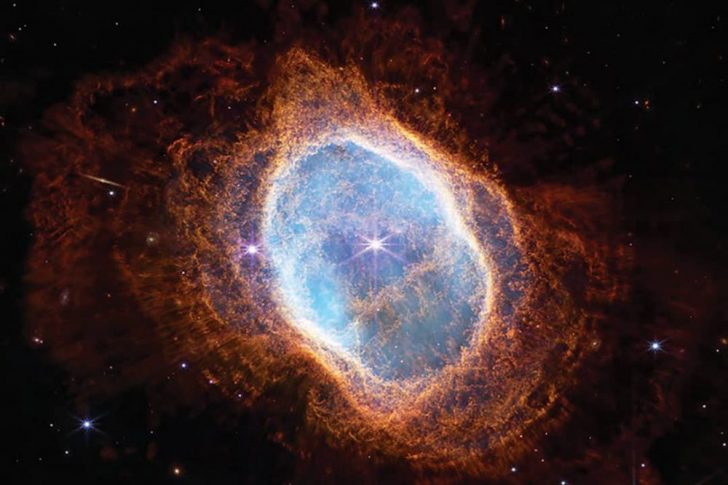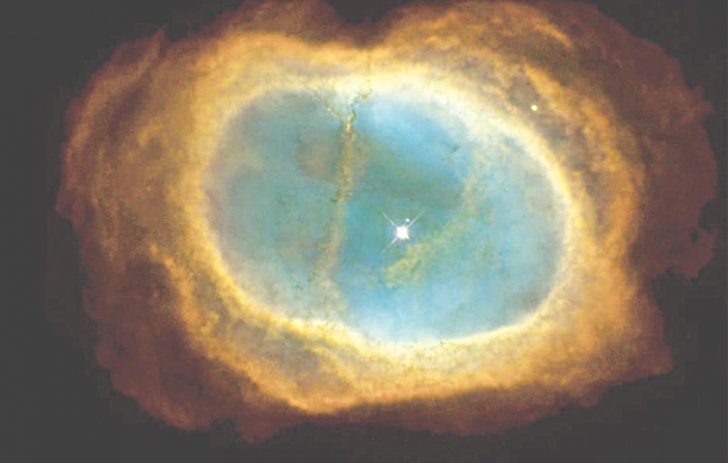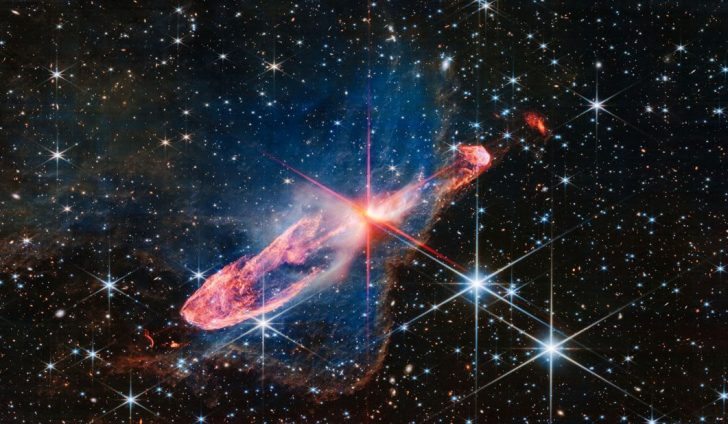In the vast darkness of space, stars are not just twinkling dots in our night sky--they are grand cosmic tales. Each star, like every living being on our planet, undergoes a lifecycle and sometimes, in their twilight years, they create the most breathtaking spectacles.
Just like the one recently captured by the James Webb Space Telescope (JWST) – the intricate, doughnut-like structure of the mesmerizing Ring Nebula. Now, let’s go ahead and explore the fascinating details of these fascinating images of Ring Nebula:

BBC / Called Ring Nebula, the star’s dying stage offers a doughnut-like image.
A Cosmic Ballet 2,600 Light-Years Away
Imagine this: A dance of glowing gas, swathed in hues of blue, green, and saffron, making a luminous ring in the cold expanse of space. This is the Ring Nebula for you, an ethereal bubble of gas and dust residing some 2,600 light-years away from our home planet.
Born out of the last breaths of a dying star, this nebula is a testimony to the drama that ensues when a star approaches its inevitable end.
Why Is the Ring Nebula So Special?
Now, one might wonder, "What's the big deal? Space is teeming with nebulae!" True! But it is the story behind the Ring Nebula's formation that has fascinated scientists and star-gazers alike. As the parent star of the nebula exhausted its nuclear fuel, it started shedding its outer layers, creating a cascade of gas. This expulsion created the doughnut-shaped structure we now see.
So, this is not just a beautiful celestial show but it is a poignant reminder that endings can be spectacular. In the heart of the Ring Nebula, the remnants of its progenitor star, now a white dwarf, can still be seen, cooling and fading slowly over billions of years.

Elle / The James Webb Telescope reveals a close-up image of Ring Nebula where the star takes the shape of a glowing gas.
The James Webb's Revolutionary Gaze
Thanks to the James Webb Space Telescope, the Ring Nebula has been unveiled in unparalleled splendor. Think of JWST as a cosmic photographer with the most advanced camera at its disposal. The details JWST has captured are not just pretty pictures. They are dense with scientific revelations.
Equipped with instruments that can detect infrared light, the JWST has penetrated deeper into the Ring Nebula than ever before, offering us insights that were previously hidden. From the cool gas at its core to the hotter, illuminated edges, the images paint a comprehensive picture of the nebula's intricate structure.
Beyond the Beauty: What Do These Images Tell Us?
By observing phenomena like the Ring Nebula, scientists can decipher the mysterious processes driving a star's life cycle. It is believed that our very own Sun will undergo a similar fate billions of years from now. Thus, understanding the Ring Nebula's formation and structure gives us a prophetic glimpse into the Sun's future.

Science / Apart from the fascinating beauty, these images unveil the hidden secrets of the cosmic world.
Moreover, these revelations hold clues to the chemical evolution of galaxies. Nebulae are often deemed stellar nurseries. Why? Well, they are rich in elements that give birth to new stars and planetary systems. Observing and understanding the Ring Nebula could shed light on the building blocks of the universe itself.
Thus, space has always been a subject of curiosity, a vast expanse that beckons with its myriad mysteries. Each discovery, like the recent capturing of the Ring Nebula by JWST, becomes a page in our ever-evolving cosmic storybook. For every person looking up at the sky and wondering what lies beyond, these images are both an answer and an invitation.